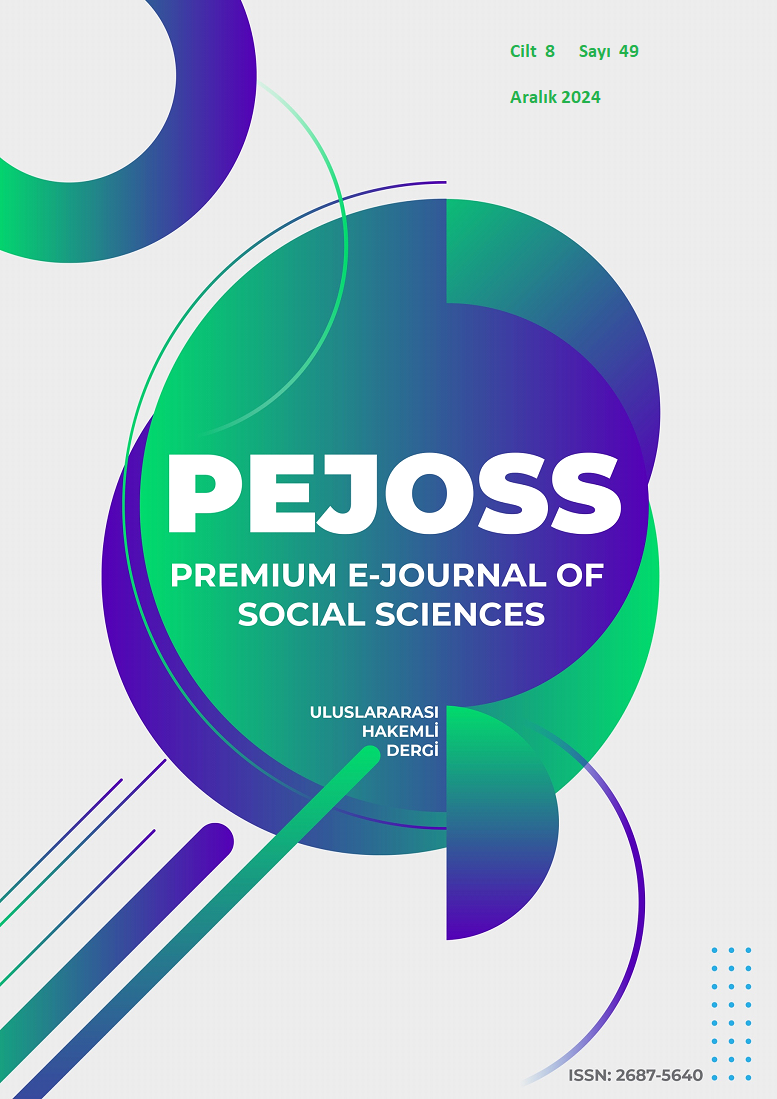An Evaluation of the Musical Structure and Performance Techniques of Franz Schubert's Wanderer Fantasy D. 760
DOI:
https://doi.org/10.5281/zenodo.14676187Keywords:
Franz Schubert, Wanderer Fantasy D. 760, Romantic Era, performance techniques, musical analysisAbstract
This study aims to comprehensively examine the musical structure and performance techniques of Franz Schubert's piano work Wanderer Fantasy D. 760. Recognized as a significant example of the Romantic Era, the Wanderer Fantasy stands out for its fusion of thematic elements from the composer’s 1816 lied Der Wanderer with the fantasy form. The four-movement structure of the piece (Allegro con fuoco ma non troppo, Adagio, Presto, and Allegro) presents a freer flow compared to classical forms, offering a cohesive narrative through uninterrupted transitions and the understanding of cyclical form. The study aims to reveal the technical and interpretative challenges posed by the cyclical themes, rich harmonic relationships, and dense contrapuntal texture present in Schubert's work. The methodology includes descriptive research and content analysis techniques. Findings highlight the distinctive thematic and harmonic structures of each movement and the technical difficulties pianists may encounter. Particularly, chord repetitions and rapid passages, dissonance resolutions, precise pedal adjustments, and the fugato texture demonstrate that the piece demands advanced performance skills. In the fast-tempo sections, dynamic control, pedaling, and hand coordination require intense attention, while in the slow-tempo sections, an approach that conveys deep emotion without compromising clarity becomes prominent. The results show that Wanderer Fantasy D. 760 reflects the richness of the Romantic period at its highest level, offers a profound artistic experience with its multilayered thematic structure, and presents pianists with a comprehensive technical and musical challenge.
Downloads
References
Adorno, T. (2005). Schubert (1928). 19th-Century Music, 29(1), 3–14.
Ağdaş, İ. B. (2014). Franz Schubert liedleri ve sanatsal özellikleri (Yayımlanmamış Yüksek Lisans Tezi). Adıyaman Üniversitesi.
Black, L. (2005). Franz Schubert: Music and belief. Oxford University Press.
Bodley, L., & Horton, J. (2016). Schubert’s late music – history, theory, style. Cambridge: Cambridge University Press.
Brown, M. J. (1951). Schubert's' Wanderer'Fantasy. The Musical Times, 540-542.
Chang, L. F. (2011). The orchestral elements in Franz Schubert’s Wanderer Fantasy-with implications for piano performance (Unpublished Doctoral Dissertation). University of Texas.
Çepni, S. (2021). Proje, tez ve araştırma makalelerinin kavramsal ve kuramsal çerçevesi nasıl yapılandırılmalı? Fen Matematik Girişimcilik ve Teknoloji Eğitimi Dergisi, 4(3), 203-216.
Daverio, J. (1997). Robert Schumann: Herald of a 'new poetic age'. Oxford: Oxford University Press.
Doğangun, D. (2021). Tarihsel bağlamda Franz Schubert ve Arpeggione ilişkisi. Journal of International Social Research, 14(78), 434–445.
Einstein, A. (1951). Schubert: A musical portrait. Oxford University Press.
Fisk, C. (1989). Questions about the persona of Schubert’s “Wanderer Fantasy.” College Music Symposium, 29, 19–30.
Gibbs, C. H., & Solvik, M. (Eds.). (2014). Franz Schubert and his world. Princeton University Press.
Graubart, M. (2010). Schubert’s silence. The Musical Times, 151(1916), 5-7.
Gray, W. (1971). The classical nature of Schubert’s Lieder. The Musical Quarterly, 57(1), 62–72.
Horton, J. (2017). Schubert. Routledge.
Hur, C. (1997). Schubert's 'Wanderer' Fantasie: A creative springboard to Liszt's sonata in B minor (Unpublished Doctoral Dissertation). University of Rochester.
Ishihama, K. (2017). Triangles of soul-Schubert the ‘Wanderer’ and his music explained by Neo-Riemannian graphs (Unpublished Doctoral Dissertation). University of Oregon.
Karasar, N. (2012). Bilimsel araştırma yöntemleri. Ankara: Nobel Yayın Dağıtım.
Lang, P. H. (1997). Music in Western civilization. New York: W. W. Norton & Company.
Newbould, B. (1999). Schubert, the music and the man. Berkeley: University of California Press.
Önal, S. (2010). Romantik dönemdeki Franz Schubert’in lied formuna katkıları (Yayımlanmamış Yüksek Lisans Tezi). Çukurova Üniversitesi.
Plantinga, L. (1984). Romantic music: A history of musical style in nineteenth-century Europe. New York: W. W. Norton & Company.
Reed, J. (1972). Schubert: The final years. London: Faber & Faber.
Rosen, C. (1998). The romantic generation. Cambridge, MA: Harvard University Press.
Rowland, D. (Ed.). (1998). The Cambridge companion to the piano. Cambridge: Cambridge University Press.
Schubert, F. (1984). Fantasie in C major, D.760 (Op.15) (C. Landon, Ed.) [Urtext edition]. Kassel: Bärenreiter.
Solomon, M. (1989). Franz Schubert and the peacocks of Benvenuto Cellini. 19th-Century Music, 12(3), 193–206.
Turnagöl, A. N. (2015). Franz Schubert’in şan eğitiminin başlangıcında kullanılan Lied’leri üzerine bir inceleme (Yayımlanmamış Sanatta Yeterlik Tezi). Hacettepe Üniversitesi.
Ünal, M. G. (2023). Franz Schubert Op.15 Wanderer Fantasy eserinin incelenmesi (Yayımlanmamış Yüksek Lisans Tezi). Hacettepe Üniversitesi.
Yalınkılıç, E., & Keser Varol, S. (2023). Franz Schubert’in Do-minör Impromptu’su (D.899 No.1) üzerinden Klasik-Romantik ikilemi. Müzik Tarihi Araştırmaları Dergisi, 9(16), 55–80.
Yıldırım, A., & Şimşek, H. (2011). Sosyal Bilimlerde Nitel Araştırma Yöntemleri. Seçkin Yayıncılık.
Downloads
Published
How to Cite
Issue
Section
License
Copyright (c) 2024 Premium e-Journal of Social Science (PEJOSS)

This work is licensed under a Creative Commons Attribution 4.0 International License.


